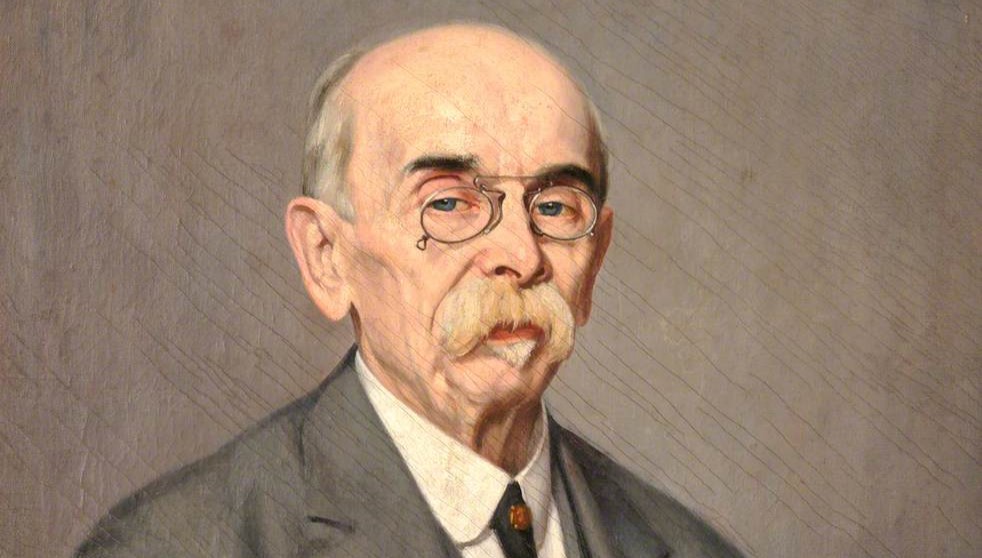Can we restore people's health with electricity: Who is Jacques-Arsene d'Arsonval?
He suggested that humans could be likened to an electric motor.

(1851-1940) French biophysicist. He developed the galvanometer and pioneered the use of high-frequency currents for therapeutic purposes.
He was born on June 8, 1851, in La Porcherie, in the Province of Haute-Vienne, and died in the city of his birth on December 31, 1940.
He came from a well-established family with large lands around Limoges. He began studying medicine at the University of Poitiers in 1869 to continue the tradition of his family of physicians for three generations.
A year later, when the Prussian War began, he went to Paris, continued his education at the College de France, and received his diploma in 1876. D'Arsonval, who became a professor at the same school in 1894, also took over the management of the biophysics laboratory from 1882 to 1910. In 1910 he established a new laboratory in Nagent sur-Marne and directed it until his retirement in 1931. In 1884 he was awarded the Legion d'Honneur; He was elected a member of the Academy of Medicine in 1888 and a member of the Academy of Sciences in 1894.
D' Arsonval was among Claude Bernard's talented assistants at the College de France. Bernard had a great influence on his interest in physiology. In his diploma thesis on the flexibility of the pulmonary artery in 1876, he argued that electrical voltage is one of the physicochemical properties of the cell. He argued that the conversion of a certain kind of energy into work was the first sign of life, and in this respect, humans could be compared to an electric motor. Based on this idea, he, like his teacher Bernard, began to study the body temperature of living things. Working with the famous neurologist Brown-Sequard for a while after Bernard's death, d'Arsonval was interested in the endocrine glands and the therapeutic properties of the secretions produced by these glands. During their collaborative work, they found that the extract from guinea pig diagnoses had a pronounced antiseptic (germicidal) property. The opinion that suggested the use of hormones in the treatment of wounds and which later led to various discussions stemmed from these studies of d'Arsonval and Brown-Sequard.
D'Arsonval's most important contribution to biophysics was that he initiated the applications of electric current in this field. Following Bernard's footsteps in his work on this subject, d'Arsonval began by measuring the electrical voltage changes that occur during muscle contractions. The galvanometers (current and voltage meters) developed in the 1820s were not sensitive enough to record very weak currents at that time. The very low current operation of the telephone, which Bell had newly developed at that time, inspired d'Arsonval and took the working principle of this device as an example in his first measurement studies. In the early 1880s, he had developed a very sensitive galvanometer known by his name, as well as instruments for use in biology, such as the battery with non-polarizing silver chloride electrodes, the myograph (with Marey) for measuring muscle tension (1882). With these instruments, he measured the electrical changes of striated muscles during contraction and relaxation for a while.
Later, he realized that high-voltage electric shocks do not necessarily cause death in living things and that they can even be used in the treatment of diseases in some cases. Thus, by using the high-frequency oscillator developed by Hertz, he developed the method of benefiting from the electric waves and heat effect created by the high frequency (500-1500 kHz) and high voltage (up to 10 000 Volt) low current (100-200 mA) in the body. . This approach, known as the "arsonvalization" method, was applied in the treatment of various diseases such as circulatory and metabolism disorders, neurasthenia and ulcers, by making use of the ability of electrical stimuli to affect the nervous system, blood circulation and various physicochemical functions in the body. First tried in 1895, this method was synonymous with electrotherapy until the "diathermy" method was developed in the 1920s. In this respect, d'Arsonval's work has an important place in making electrotherapy an applied science.
While continuing his biophysics studies, d'Arsonval, who is also interested in physics as a necessity of the subject, has recently focused his attention on this field. In 1902, he researched the liquefaction of gases with Georges Claude. However, d'Arsonval's most important contribution to physics was the development of a galvanometer that was superior to the samples used up to that day during his physiology studies. Before that, the galvanometers made by Oersted, Kelvin, Nobili, and Lippman to measure the intensity of electric current gave erroneous results because they were affected by the gravity of both the Earth and other electromagnetic forces. D'Arsonval also studied these rotating magnet galvanometers and developed a rotary dial galvanometer together with the French physicist Deprez. The D'Arsonval galvanometer consists of a cylinder (core) of pure iron placed between the poles of a stationary horseshoe magnet and a coil wound on it; It is also known as a reflective galvanometer because there is a mirror at one end of the coil. The d'Arsonval galvanometer, of which different examples were developed later, was used in the field of physiology as well as taken as an example in the construction of various ammeters and voltmeters.
